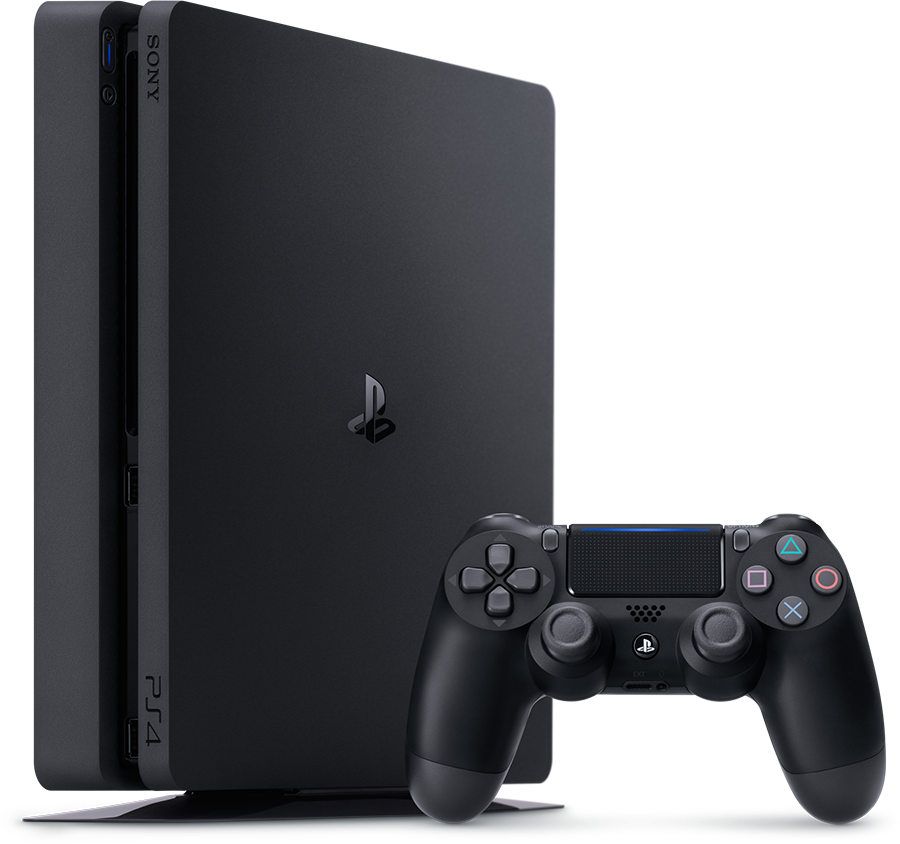

The original PlayStation 4 console with DualShock 4 controller
| |
| Developer | Sony Computer Entertainment |
|---|---|
| Manufacturer | Sony,[1] Foxconn[2] |
| Product family | PlayStation |
| Type | Home video game console |
| Generation | Eighth generation |
| Release date | |
| Introductory price | US$399.99, €399.99, £349.99 |
| Units sold | 40.0 million (as of May 22, 2016) |
| Units shipped | 47.4 million (as of September 30, 2016) |
| Media | Blu-ray Disc, DVD |
| Operating system | PlayStation 4 system software |
| CPU | Semi-custom 8-core AMD x86-64Jaguar 1.6 GHz CPU (integrated into APU)[5] Secondary low power processor (for background tasks)[6] |
| Memory | 8 GB GDDR5 (unified) 256 MB DDR3 RAM (for background tasks)[6] |
| Storage | Hard drive, 500 GB, 1 TB (user upgradeable, supports SSD) |
| Display | HDMI (480p, 720p, 1080i, 1080p, and 4K for pictures and videos only)[7][8] |
| Graphics | Semi-custom AMD GCN Radeon(integrated into APU) |
| Controller input | DualShock 4, PlayStation Move, PlayStation Vita |
| Camera | PlayStation Camera |
| Connectivity | 802.11 b/g/n Wireless, Bluetooth 2.1, USB 3.0, Ethernet 10/100/1000 |
| Online services | PlayStation Network |
| Backward compatibility | PlayStation Now cloud-based emulation and PS2 emulation |
| Predecessor | PlayStation 3 |
| Website | playstation |
The PlayStation 4 (abbreviated as PS4) is a home video game console developed by Sony Computer Entertainment. Announced as the successor to the PlayStation 3 during a press conference on February 20, 2013, it was launched on November 15 in North America, November 29 in Europe, South America and Australia, and February 22, 2014 in Japan. It competes with Nintendo's Wii U and Microsoft's Xbox One, as part of the eighth generation of video game consoles.
Moving away from the more complex Cell microarchitecture of its predecessor, the console features an AMDAccelerated Processing Unit (APU) built upon the x86-64 architecture, which can theoretically peak at 1.84 teraflops; AMD stated that it was the "most powerful" APU they had developed to date. The PlayStation 4 places an increased emphasis on social interaction and integration with other devices and services, including the ability to play games off-console on PlayStation Vita and supported Sony Xperia mobile devices ("Remote Play"), the ability to stream gameplay online or to friends, with them controlling gameplay remotely ("Share Play"). The console's controller was also redesigned and improved over the PlayStation 3, with improved buttons and analog sticks, and an integrated touchpad among other changes.
Reception to the PlayStation 4 prior to launch was positive, with critics praising Sony for acknowledging its consumers' needs, embrace of independent game development, and for not imposing restrictive digital rights management schemes that Microsoft had previously announced for Xbox One prior to its release. Critics and third-party studios also praised the capabilities of the PlayStation 4 in comparison to its competitors; developers described the performance difference between the console and Xbox One as being "significant" and "obvious".[9]Heightened demand also helped Sony top global console sales. As of June 30, 2016, more than 43 million consoles have been shipped worldwide.[10]
On September 7, 2016, Sony unveiled two hardware revisions of PlayStation 4; a slim build of the console, and a "Pro" version with an upgraded GPU and higher CPU clock rate to support 4K gameplay on supported titles. All models, including the original sold in 2013, support HDR10 high-dynamic-range color







0 comments:
Post a Comment